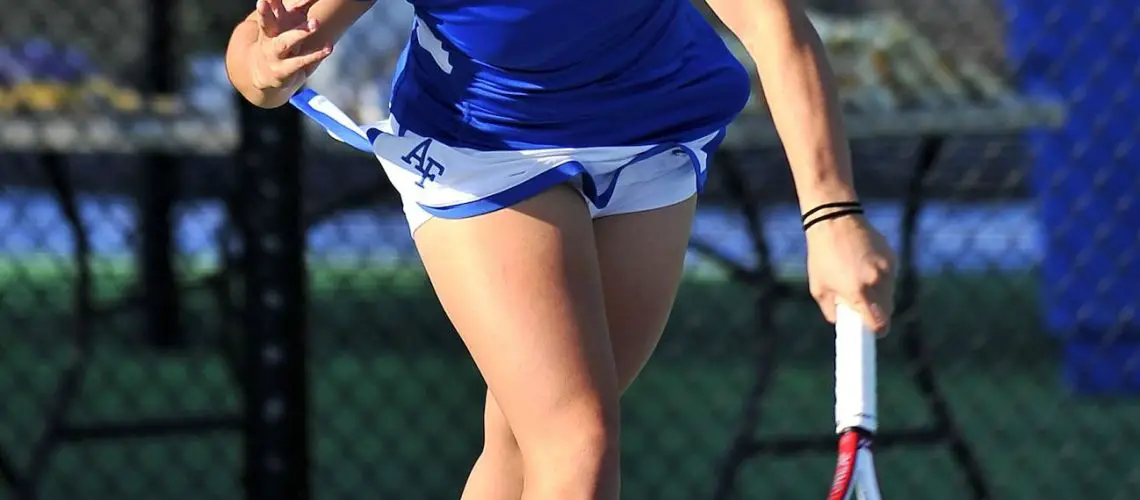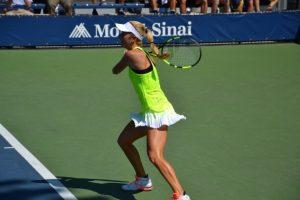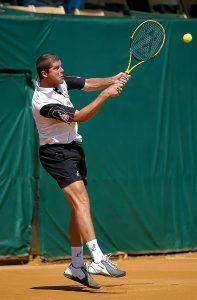We may earn money or products from the companies mentioned in this post.
Introduction

Tennis, a sport loved by millions around the world, is known for its fast-paced gameplay and strategic maneuvers At the heart of this exciting game lies the serve, a fundamental stroke that initiates each point Throughout history, tennis serves have evolved from simple overhead strikes to complex techniques that can completely change the dynamics of a match
Brief history of tennis serves
In the early days of tennis, players used a basic underhand serve, where they would hit the ball with an upward swing below their waist This technique was effective in getting the ball into play but lacked power and variety
As the game progressed and players began experimenting with different techniques, the overhand serve emerged in the late 19th century This revolutionary method involved striking the ball from above one’s shoulder, allowing for greater speed and accuracy
Over time, players like Pancho Gonzales and Rod Laver introduced new serving styles such as topspin serves and kick serves These innovations added spin to the ball, making it more challenging for opponents to return effectively
Importance of having a variety of serves
In modern tennis, having a diverse repertoire of serves is crucial for success on the court A player who can deliver various types of serves keeps their opponents guessing and puts them at a disadvantage
By incorporating different spins, speeds, and placements into their serves, players can exploit their opponent’s weaknesses or force errors A powerful flat serve can be used to intimidate opponents with its sheer velocity, while a well-executed slice serve can keep them off balance by angling away from their comfort zone
The ability to mix up serves also plays a significant role in strategy and tactics during matches By strategically choosing when to use certain types of serves, players can disrupt their opponent’s rhythm and gain a psychological advantage
Moreover, variety in serving allows players to adapt to different court surfaces and playing conditions A strong serve on grass may require more slice and kick to take advantage of the surface’s low bounce, while a hardcourt might favor flat, penetrating serves
In conclusion, understanding the history of tennis serves and recognizing the importance of having a variety of them can elevate a player’s game to new heights By continually refining their serving techniques and exploring different styles, players can become formidable opponents who consistently dominate matches with their strategic prowess
Understanding the Kick Serve

The kick serve is a powerful and versatile tennis technique that can give you an edge in your game This unique serve combines topspin and slice components to create a ball trajectory and bounce that can catch your opponent off guard Let’s dive into the definition and characteristics of this impressive shot
1 Topspin and Slice Components
The kick serve involves imparting both topspin and slice on the ball, creating a deadly combination The topspin causes the ball to rotate forward, generating lift as it travels through the air On the other hand, the slice component adds side spin, causing the ball to curve away from your opponent after it bounces
2 Ball Trajectory and Bounce
Due to its unique spin, the kick serve produces a high bouncing trajectory that can be challenging for your opponent to handle effectively As the ball approaches their side of the court, it will jump up, making it difficult for them to return with accuracy or power
How to Execute a Kick Serve

If you want to add this effective weapon to your arsenal, mastering the execution of the kick serve is crucial Here are some key factors to consider:
1 Grip: Eastern or Continental?
To execute a successful kick serve, choosing between an Eastern grip or continental grip is essential The Eastern grip allows for more topspin while still maintaining control over slice components, making it popular among many players On the other hand, some players prefer using a continental grip for better control over slice shots
2 Toss Placement and Height
The placement and height of your toss play a significant role in executing an effective kick serve consistently
-
Toss Variations for Different Types of Spin:
Depending on the type of spin you want to generate, you can vary the placement of your toss For more topspin, toss the ball slightly behind your head To add more slice, aim for a toss closer to your non-dominant shoulder -
Timing and Coordination:
Timing your toss and coordinating it with your swing is crucial for a successful kick serve Practice finding the right rhythm and fluidity between your toss and swing motion to maximize power and accuracy
3 Swing Path and Contact Point
The swing path and contact point are critical elements in executing a powerful kick serve
-
Racket Head Acceleration:
As you swing up towards the ball, focus on accelerating the racket head to generate maximum spin and power -
Pronation, Wrist Snap, and Follow-Through:
Proper pronation (rotation of forearm), wrist snap, and follow-through are essential for generating optimal spin on the ball Practice these techniques to enhance the effectiveness of your kick serve
Mastery of these techniques will allow you to unleash a devastating kick serve that will keep your opponents guessing Incorporate these tips into your practice sessions, refine your technique, and elevate your game to new heights!
Advantages of the Kick Serve

The kick serve is a powerful weapon in a tennis player’s arsenal, offering several tactical advantages on different court surfaces Let’s explore how this unique serve can give you an edge over your opponents
Clash with opponent’s weaker side or backhand
One of the key advantages of the kick serve is its ability to exploit your opponent’s weaknesses By directing the ball towards their weaker side or backhand, you force them into uncomfortable positions and make it harder for them to execute strong returns This strategic move can disrupt their rhythm and throw them off balance, giving you a clear advantage in the match
Higher margin for error due to net clearance
In addition to targeting your opponent’s weak spots, the kick serve offers a higher margin for error compared to other serves The pronounced topspin generates more net clearance, reducing the chances of hitting into the net This not only helps you avoid double faults but also allows you to maintain consistency under pressure situations, such as tight games or tiebreakers
Surprising opponents with different spin combinations
The kick serve is known for its ability to produce various spin combinations that can catch opponents off guard By utilizing topspin and sidespin in different proportions, you can create unpredictable trajectories that are difficult to read and return effectively This element of surprise puts your opponents on the back foot and gives you an opportunity to take control of the point from the very beginning
In conclusion, mastering the kick serve provides numerous advantages on any court surface By clashing with your opponent’s weaker side, enjoying a higher margin for error, and surprising them with different spin combinations, you increase your chances of dominating matches and gaining an edge over competitors
Common Mistakes And Solutions

Identifying common errors in executing the kick serve
When it comes to executing a kick serve, there are a few common mistakes that players often make One of these is inconsistent toss placement A poorly placed toss can greatly affect the direction and spin of your serve Another mistake is having a poor racket angle at contact This can result in a lack of control and accuracy when hitting the ball Lastly, many players struggle with a lack of leg drive, which is crucial for generating power and height on the kick serve
Practice tips and drills for improving your kick serve
If you’re looking to improve your kick serve, there are several practice tips and drills that can help you refine your technique Toss consistency exercises are a great place to start Focus on tossing the ball consistently in the same spot each time to develop muscle memory and improve accuracy
Shadow swings focusing on technique can also be beneficial By mimicking the motion of a kick serve without actually hitting a ball, you can concentrate on perfecting your form and ensuring proper racket angle at contact
Lastly, progressive training from basic topspin serves to advanced kick serves can help you gradually build up your skills Start by mastering the basics of topspin serves before transitioning into more complex kicks
Useful Links

Kick Serve In Tennis | The Ultimate Guide
(PDF) The kick serve in tennis
Facts You Should Know About Slice and Kick Serves
The Key To Improving Your Top Spin Tennis Serve …
How to Hit a Tennis Kick Serve aka Topspin Serve
Tennis Kick Serve
What Is A Kick Serve In Tennis
The Ultimate Topspin Tennis Serve Video Guide
What’s A Kick Serve and Why Does It Matter?
How to return a kick serve in tennis
Learn kick serve instead of a normal serve? : r/10s
Kick Serve Tennis | Carnation WA
5 Steps To A Successful Kick Serve
Returning a kick serve as a pro
Kick Serve – Prince of Tennis Wiki – Fandom
Physics of the Tennis Kick Serve
What is a Kick Serve in Tennis? Tips & Advantages






